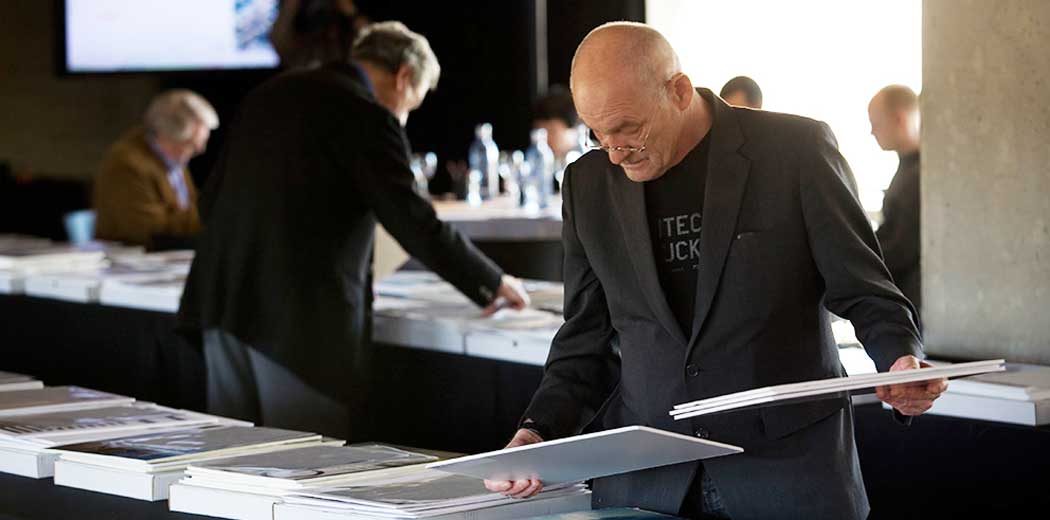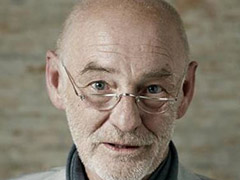The autor reflects on the European Prize for Urban Public Space, from his experience as a member of the jury since 2002.
The past ten years of the biennial European Prize for Urban Public Space are not only a testament to advances in terms of honoring outstanding architectural achievements, but they have also accompanied the discursive development of the meaning of public space over the past decade. Since its beginnings in 2000, a continually increasing process of cooperation began with other European architectural institutions. The prize winners and the archive have thereby provided a view of the development of urban public space in Europe that is both unique and representative.
As a member of the jury since 2002, I will attempt to portray the development of the prize and the activities of the CCCB as a distilled reflection of the European debate. First of all, there is no other European city that can compare with Barcelona as a location for discourse on public space. The now legendary program for public spaces implemented during the 1980s was, after the political blockade of the Franco dictatorship, an act of urban liberation causing a worldwide sensation beyond the world of architecture.
So what could be more obvious than for CCCB, a unique institution devoted to comprehensive cultural and intellectual development, to conceive and award a prize for urban public space? The numerous and varied project entries have constantly confronted the juries with several substantive questions: What is urban public space in the new millennium? Has it not long since vanished in the medial space of Internet communities? Hasn’t urban space become increasingly privatized in reality? And hasn’t it become ever more domesticated and disciplined by a growing number of rules and regulations?
We often forget that it was not until the second half of the twentieth century that urban public space was defined as a generalizing type. Prior to that, the terminology of city planning only contained the concepts of streets and plazas, parks and recreational areas. It merely concerned the empty spaces between buildings required for fire safety and light. And in those cases where public space was considered and planned in terms of architectural ‘shaping,’ then only for the representation of political might – be it royal, fascist or communist – and in order to allow the behavior of the users of that space to be controlled and monitored. Not until the democratic reforms in the middle of the nineteenth century did the notion of public space ‘for all,’ of ‘everyday publics,’ emerge. But even this concept was determined and shaped by sociologically defined rituals, that is, political rituals.
Hence, I dare to argue that there has never been and there will never be a free urban space for all actions and representations of the public. After all, each and every public space – as is especially apparent in the ‘social space’ of the Internet – is determined by rituals of use, which necessarily entail codes of behavior, limits of access and processes of exclusion. Jury President Manuel de Solà-Morales once expressed this point clearly and matter-of-factly: every football stadium is private, and yet all of its users, even though they have to pay to enter, have the feeling that they are using public space.
In reality, therefore, it doesn’t matter whether urban public space is under public or private management, nor whether it constitutes real or virtual space. Every point of access and activity in this space requires ‘political negotiation.’ Left-wing complaints about the growing privatization of public space – the transformation of plazas into shopping malls – cannot withstand reality. I sit in a restaurant in a Barcelona shopping mall, which opens out onto a public private space. I order a beer and spend an hour reading a book, without being bothered. I walk along the public space of the Passeig de Gràcia, until public security forces suddenly barricade the sidewalk due to a minor demonstration. My conclusion: the public use of public space is not a question of abstract relations of ownership, but is always a question of how power is exercised over that space.
It is this question of how to define urban public space that the jury members have been faced with over the last decade. Does public space have to be an open, outdoor space, or can buildings also be public space? Even the legendary Nolli Map of Rome (1748) shows that public spaces stretch from streets and plazas to the internal spaces of public buildings. Is a covered market, a church, or a shopping mall public space? Rafael Moneo, a President of the jury that awarded the 2010 prize to the Norwergian National Opera & Ballet in Oslo, offered an especially piquant justification for the flexibility of the concept of public space: The public space offered by the roof and the surroundings of the building is such an enrichment for Oslo’s public space that the role of the building itself in that context becomes irrelevant.
What value do we assign to architectural and artistic projects that thematize public space in an ephemeral or temporal fashion? Indeed, these projects have become ever more important in recent years. These mostly participatory artistic projects convey increasing uncertainty about generally accepted rituals for the use of public space in increasingly heterogeneous societies. This artistic avant-garde hints to us that in the future, it will only be possible to ‘moderate,’ rather than determine, the use of public space. This means that the rituals of power and the rituals for appropriating space will come to flow together into a continual political discourse.
If I were to summarize my experience as a member of the jury, then I would have to address the technical process of evaluating entries. The jury always had to take decisions about the nature of the various entries, which have always been composed of images and texts. There is a real question as to whether brief recorded glances can truly give a sense of the long-term functionality of an urban public space. After all, these spaces take on life through the use that is made of them, and that use in turn depends on the seasons, on societal developments and political restrictions. All of this can only be verified through long-term observation and analysis.
On the other hand, the remarkable continuity within the jury has allowed an accumulation of knowledge about the significance and quality of entries. Currently popular elements of public space are floor lamps and dramatic lighting concepts; informal water surfaces, often with interactive foundations that playfully spray playing children; benches and seating areas; and ornamental floor spaces decorated with various patterns and materials. What is decisive is not how ‘beautiful’ a new public space has become, but whether it can tell a ‘story’ that can contribute to the identity of the location.
And sometimes, faced with ‘before & after’ images, it would have been better not to do anything at all. Urban public space is ‘social sculpture,’ a political space for negotiation. That is the ‘text’ that accompanies the discourse of the jury beyond the presented ‘images.’




